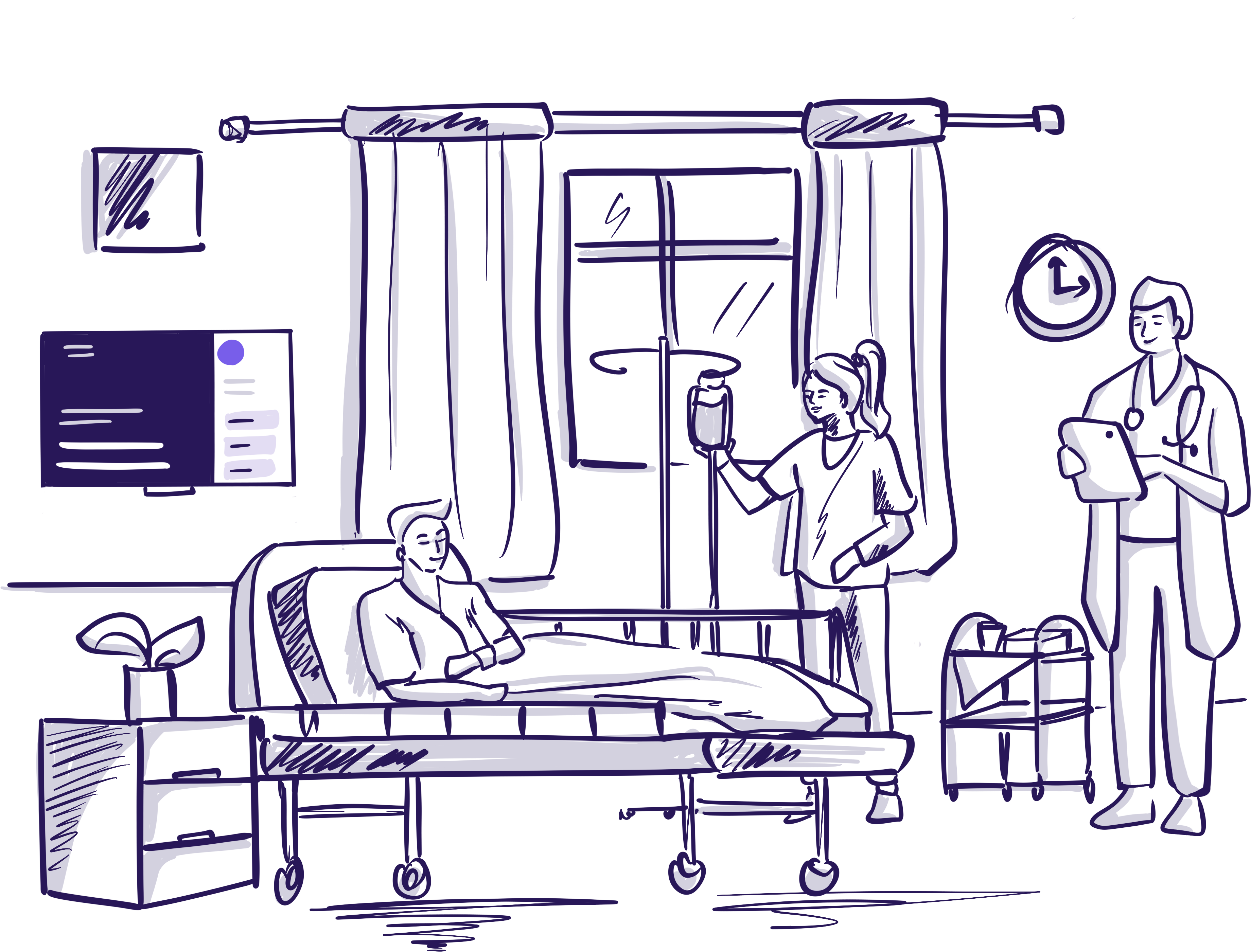A smart room experience that sets you apart
Building a new smart hospital or smart room in a hospital presents the opportunity to create market differentiation and grow market share. In planning for new construction, many organizations think about offering state-of-the-art clinical technology, and increasingly organizations are also thinking about the patient’s experience as a differentiator.
Meet patient needs through smart room technology
The building of a new tower for a health system is an investment that brings that health system distinction and market differentiation. It is an opportunity to invest in cutting-edge clinical technology and architectural design to attract patients and talent..
But while there is no shortage of transformative clinical technology, much of the industry continues to struggle to provide some of the most basic comforts to patients in a modern way.
Smart patient rooms in hospitals:
- Elevate the patient experience through consumer-grade self-service
- Accommodate patient and family needs while also encouraging engagement
- Provide opportunities for multi-stakeholder engagement, improving transparency and communication
- Enable top-of-license care through automation of many aspects of patient education
- Streamline in-room hardware and seamlessly connects to other HIT systems
- Capture downstream loyalty and creates stickiness with the health system
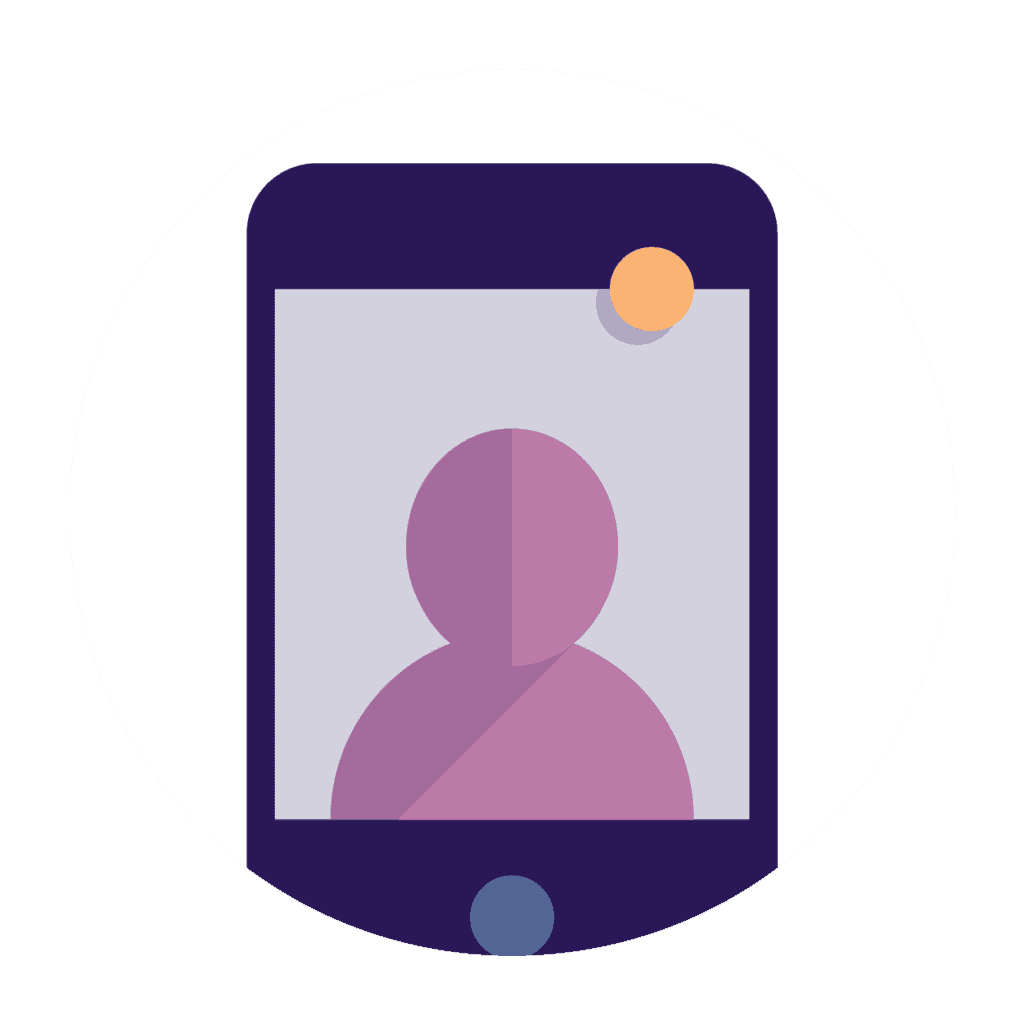
Design a smarter patient experience today.
Smart room integrations and consultative services
GetWell Inpatient reflects a long-standing commitment to system interoperability, resulting in increased speed to value for hospitals and health systems.
Providing a multi-modal suite of digital experiences and displays that integrate with a variety of third-party vendors, GetWell Inpatient supports areas like videoconferencing, meal ordering, and environmental controls through a cloud-based, enterprise-grade platform with HITRUST certification.
This integration maximizes the value of other technology investments to provide a highly connected, streamlined, and differentiated in-room experience and supports clinicians in their day-to-today tasks. Seamless interoperability means hospitals and health systems can introduce new capabilities easily, resulting in speed to value for hospitals and health systems and deliver a new level of comfort and convenience.

500+
Cerner
interfaces
600+
Epic
interfaces
53
meal ordering
integrations
300+
medication teaching
integrations
200+
Whiteboard integrations
40+
live integrations to patient portals
500+
Cerner
interfaces
600+
Epic
interfaces
53
meal ordering
integrations
300+
medication teaching
integrations
200+
Whiteboard
integrations
40+
live integrations to
patient portals
Get Well brings a best practice, consultative approach to help guide organizations through key considerations to help them avoid common pitfalls, avoid costly rework, maximize investments in other tech investments, and design hospital patient rooms in a way that elevates the patient experience without burdening the clinical team.
Spotlight on intentional innovation
Cortellucci Vaughan Hospital, one of two hospitals in the Ontario-based Mackenzie Health regional healthcare system, is the first smart hospital in Canada.
The new Cortellucci Vaughan Hospital features fully integrated smart technology systems and medical devices. Smart technology throughout the facility is powered by GetWell Inpatient and enables the facility to provide a superior patient experience that supports real-time information exchange.
With GetWell Inpatient fully integrated, patients at Cortellucci Vaughan Hospital have greater control over their care and are able to access education and information about their care, enabling an improved patient experience. GetWell Inpatient allows staff to spend less time on non-clinical tasks like paperwork. It also supports real-time capture of patient data, helping to improve the efficiency of workflows and allow for more direct patient care.
Learn more about Mackenzie Health and Cortellucci Vaughan Hospital and their decision to open a smart hospital in this roundtable discussion with Get Well’s President, Nikia Bergan.
Bring the smart patient experience to mobile devices
Increase the reach of patient engagement technologies through a mobile-first strategy that enables patients to access education, concierge services, care team information, and post-discharge support on their mobile devices.
Offering the smart patient experience on mobile devices also gives organizations the ability to provide a consistent patient experience across an entire healthcare system, fostering brand recognition and mitigating the need for a significant capital investment.
Welcome
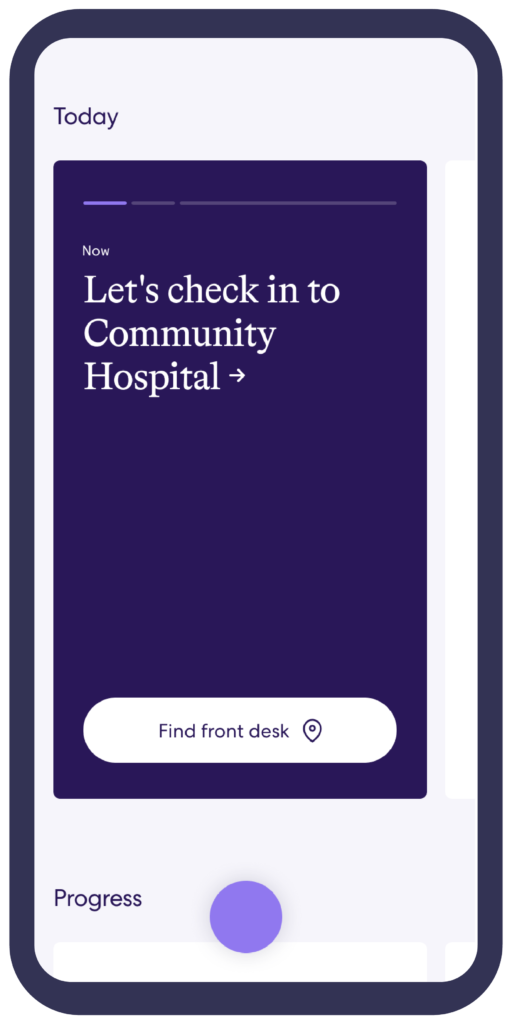
Who’s on my care team?
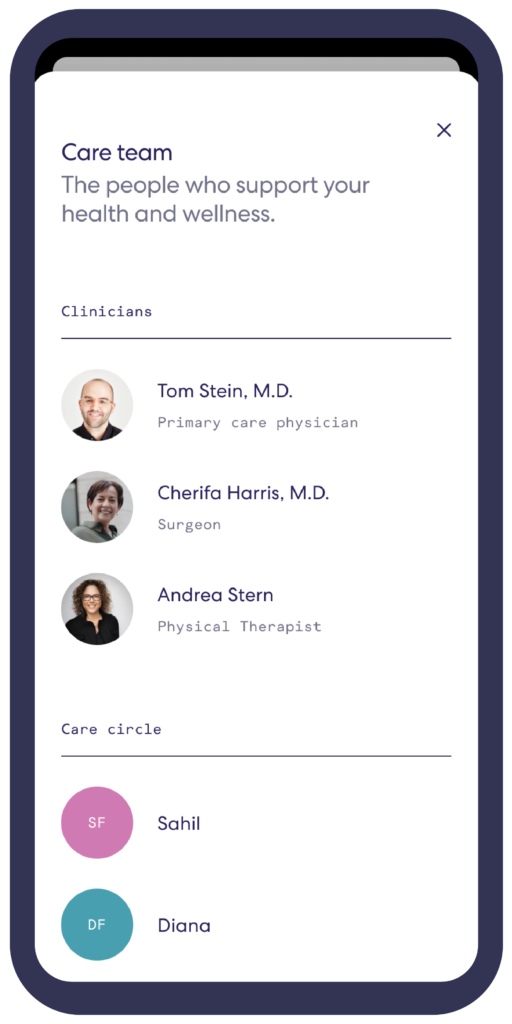
What can I watch in bed?
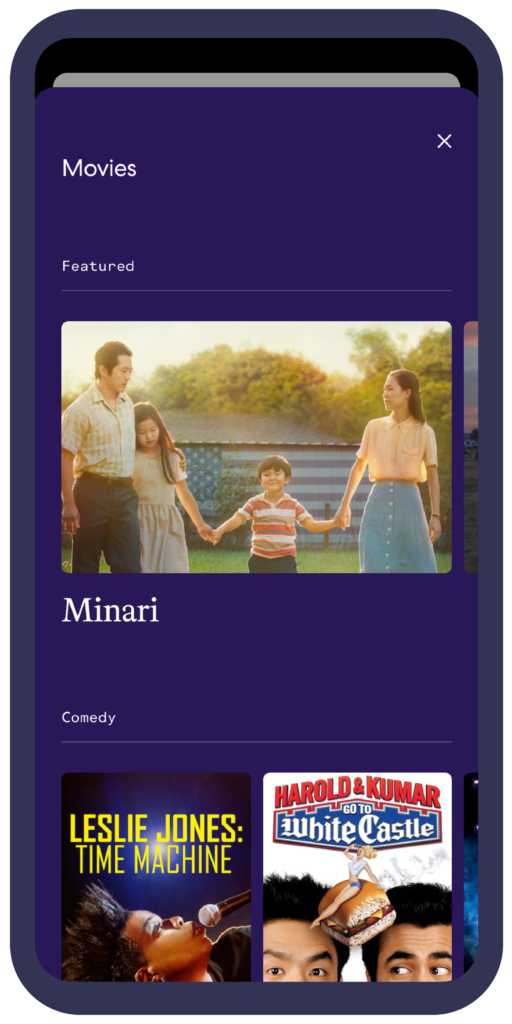
Can I get help in my room?
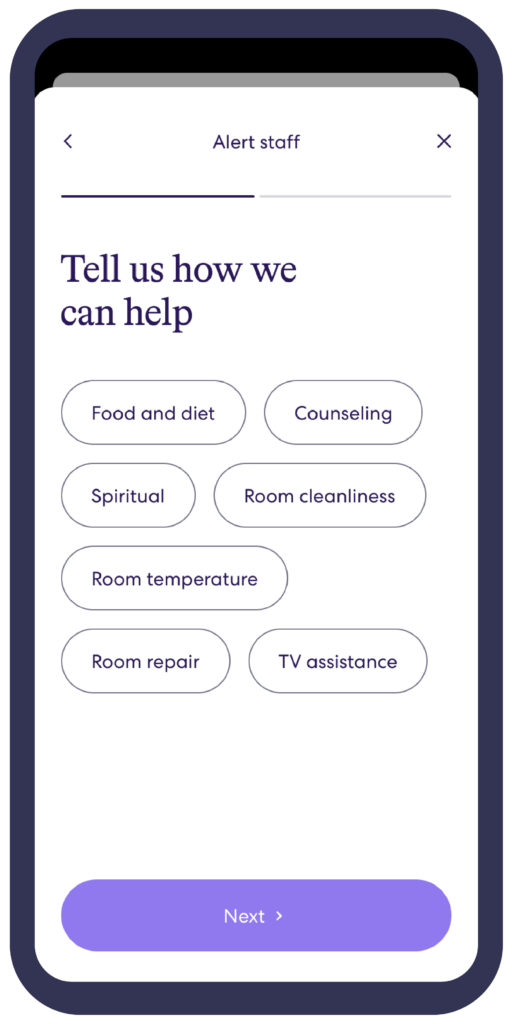
Can I get some
food?
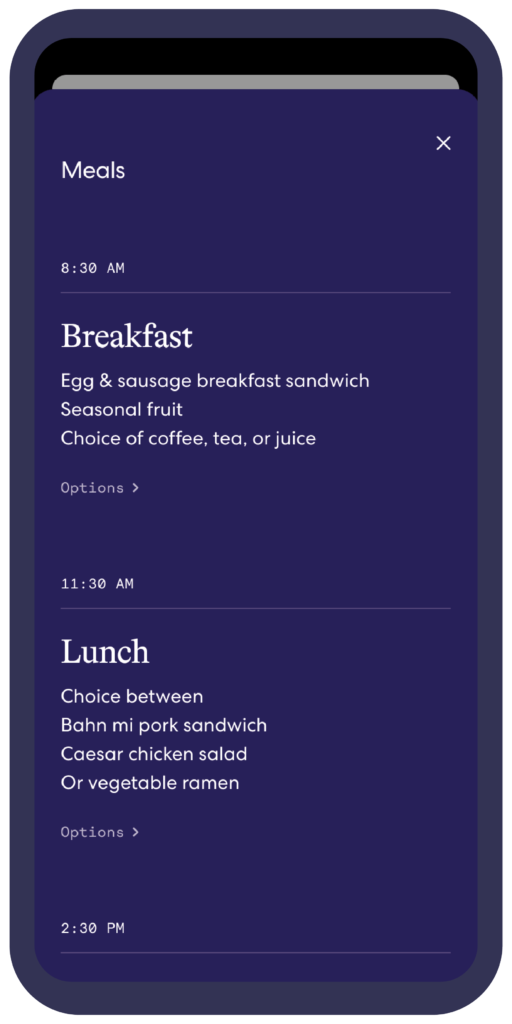
What happens when I leave?
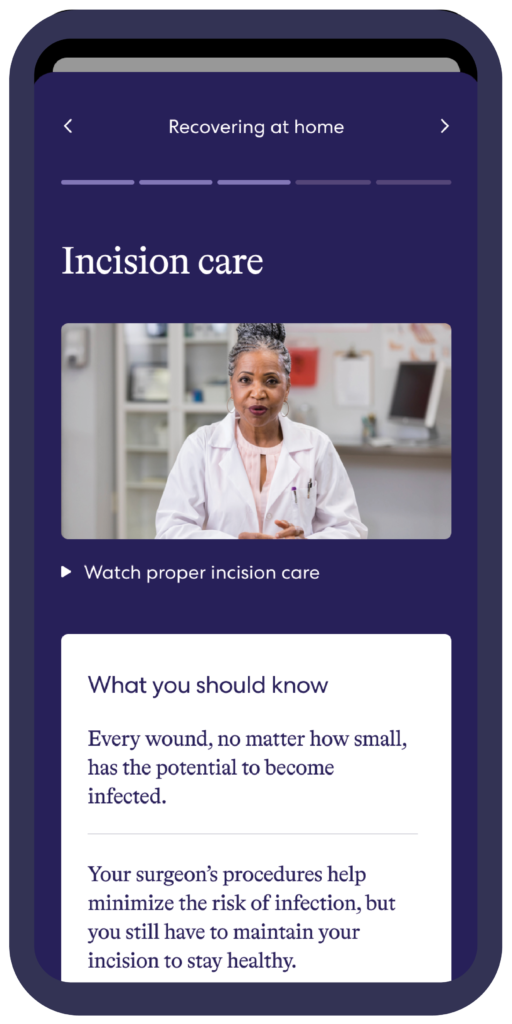
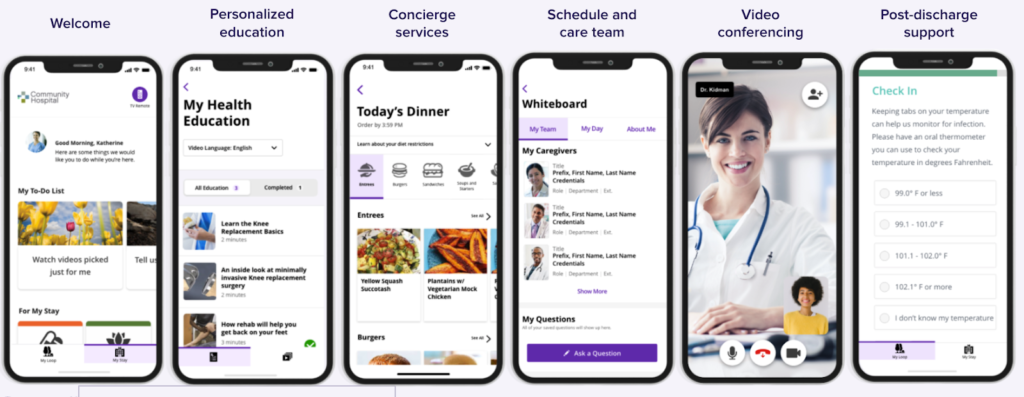
Recommended resources
Access our full Resource Library.
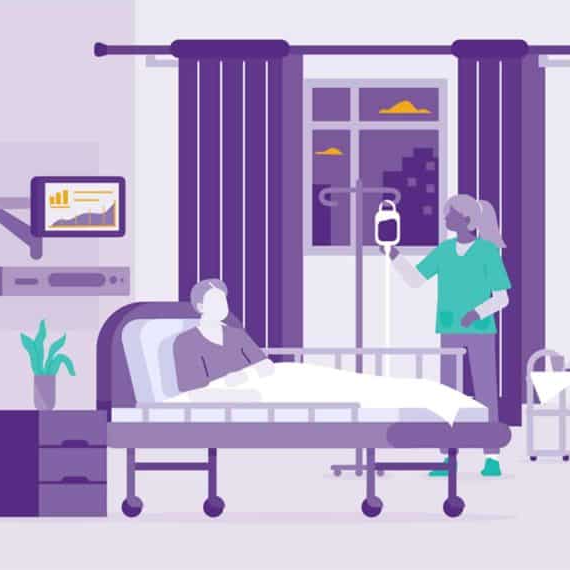
Designing the smarter patient experience
Read this guide to learn how hospitals and health systems can use digital engagement technology to improve care quality and access to all.

Intentional innovation: The smarter patient experience
Access this webinar to learn how Mackenzie Health opened the first smart hospital in Canada.

A peek behind the curtain at MUSC’s children’s hospital
Explore best practices for building a smart room and improving the patient experience from inpatient to post discharge.

User-friendly technology
Offer patients the flexibility to control their environment from any device, including tablets, smartphones, smart TVs, and voice-controlled digital assistants

Augmented rounding
Screencast clinical information and trending data from the EMR and other systems to increase doctor and patient engagement during rounds

Enhanced communications
Enable offsite specialists or remote family members to join the care plan discussion through video conferencing

Patient-controlled environment
Patients control the lighting, room temperature, and programs or features displayed on the TV from a singular device

Personalized care plans
Deliver tailored care plans and health education content to the in-room TV or patient’s mobile devices through a personalized interface

Barrier-free design
Eliminate barriers to human connection through a modular room design that is more conducive to clinician-patient engagement
